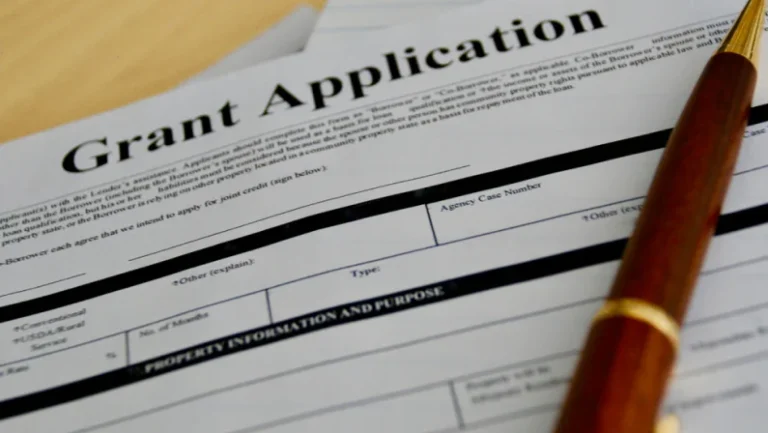Effective government contracting starts well before the proposal stage. The process of capture planning helps your team prepare to win specific government opportunities by developing targeted strategies and building meaningful relationships.
Rather than waiting for a Request for Proposal (RFP) to drop, successful contractors begin laying the groundwork early. This approach increases the chances of winning and reduces wasted effort.
Let’s walk through the essentials of capture planning and how it shapes a winning government contracting strategy.
What Is Capture Planning in Government Contracting?
Capture planning refers to the structured process of preparing to pursue a government contract before the solicitation is released. It includes gathering information about the agency, assessing competitors, evaluating your ability to meet the requirements, and developing a strategy that positions your business as the ideal choice.
A capture plan outlines the steps needed to improve your win probability. This includes relationship building, teaming discussions, technical positioning, and pricing considerations. In short, capture management connects business intelligence to strategy so your capture to proposal process is informed, focused, and competitive.
Why Does Capture Planning Matter for Federal Contractors?

Federal opportunities often involve high-value contracts, long procurement cycles, and intense competition. Without a strong capture strategy, contractors can end up submitting proposals that miss the mark.
Capture planning gives you time to understand the agency’s mission, tailor your messaging, and make sure your offer is both compliant and compelling. It reduces last-minute scrambles and positions your company as proactive, not reactive. In the world of business capture, this preparation often makes the difference between winning and losing.
When Should You Start the Capture Planning Process?
The most effective capture efforts begin early. Ideally, your team should initiate capture planning 12 to 24 months before the RFP is released. This gives you time to engage with the agency, understand its pain points, and shape the opportunity if possible.
Starting early also means your team can prepare technical capabilities, secure teaming partners, and use capture plan templates to organize research and activities. Waiting until an opportunity hits SAM.gov is often too late to compete effectively.
Who Should Be Involved in Capture Planning?
A successful capture plan involves more than just the capture manager. The best outcomes happen when there is collaboration across departments. Your team might include business development, proposal writers, technical leads, pricing analysts, and executive leadership.
Each member brings a different perspective. The business development team can speak to the agency’s needs, while the technical lead ensures feasibility. When coordinated, these roles strengthen every stage of capture and proposal management.
What Are the Key Components of a Capture Plan?

A well-structured capture plan provides a clear roadmap from early opportunity identification through proposal submission. Each component plays a specific role in guiding your team’s strategy, helping you respond with confidence and focus. These sections are interconnected, supporting a unified approach that can lead to a stronger competitive position.
Understand the Decision-Makers and Their Priorities
Effective capture planning begins with a detailed understanding of the agency you want to serve. This includes knowing who the decision-makers are, what their current priorities look like, and how their procurement patterns have evolved. Reviewing their recent contract awards and public statements can help you anticipate what solutions they are likely to fund. When you align your offering with their mission and anticipated needs, you increase your chances of standing out early in the process.
Analyze Your Rivals and Identify Gaps
Before developing your proposal, it’s important to examine who else is likely to bid on the same opportunity. Look at past winners, known industry leaders, and potential small business challengers. What advantages do they bring? What might they be missing that your team can offer? Understanding the strengths and limitations of your competitors allows you to shape a capture strategy that emphasizes your differentiators. The better you understand the field, the better you can focus your messaging and solution design.
Strengthen Your Position with the Right Partners
Many government contracts require a team-based approach. A strong teaming strategy outlines which partners or subcontractors could enhance your proposal. This could include companies that fill technical gaps, expand geographic coverage, or contribute small business designations that meet procurement goals. Your capture plan should clearly identify who you want to approach, how each partner adds value, and how roles will be defined during project execution. These decisions are easier to manage when considered early, not rushed during proposal development.
Define Why Your Solution Works Best
Your value proposition is the foundation of your proposal’s narrative. It should clearly explain how your solution addresses the agency’s specific needs and challenges. This statement must go beyond listing qualifications or services. It should show a direct connection between what the agency is trying to accomplish and how your approach delivers that outcome. When this message is developed during the capture planning phase, it sets the tone for every conversation, briefing, and proposal section that follows.
Align Cost with Value and Strategy
The pricing section of your capture plan should reflect a thoughtful approach that balances competitiveness with internal goals. Consider the likely contract type, the agency’s budget posture, and what pricing strategies have succeeded in previous awards. Your team must be able to justify the cost with real value while also maintaining healthy margins and meeting performance commitments. Thinking through this early allows you to avoid pricing surprises later and helps you prepare a compliant and responsive cost volume.
How Do You Identify and Qualify the Right Opportunities?
Pursuing every opportunity spreads your team too thin and lowers your chances of success. Effective capture management includes filtering opportunities early and qualifying them based on specific criteria.
Evaluate alignment with your company’s capabilities, contract history, funding confidence, and access to the agency. If you already have a relationship with decision-makers or performed similar work, you likely have an edge. Using these filters during the business capture phase ensures your efforts stay focused and strategic.
What Tools and Techniques Support Capture Planning?

Technology can help streamline your capture process. Many teams use CRMs to track agency contacts, capture planning platforms to store notes and strategy documents, and capture plan templates to standardize planning.
Other helpful techniques include stakeholder mapping, win-loss reviews from previous bids, and gap assessments to identify areas of improvement. The more systematized your approach, the more consistent your results in grants management and proposal success.
How Does Capture Planning Improve Proposal Success?
When done well, capture planning makes proposal writing easier and more effective. Your writers are not starting from scratch. Instead, they are building on months of research, strategy, and alignment with the agency’s needs.
This preparation leads to clearer messaging, stronger win themes, and fewer compliance errors. It also helps your proposal team stay focused and on schedule, especially during complex or multi-volume submissions. Effective capture and proposal management reduces rework and improves win rates.
What Are Common Mistakes to Avoid in Capture Planning?
Even seasoned contractors can fall into patterns that limit their success in government contracting. Many of these challenges come down to timing, preparation, and communication. Avoiding them begins with understanding how they tend to show up during the capture process.
Starting Too Late
One of the biggest mistakes is beginning capture planning after the request for proposal (RFP) has already been released. By that point, agencies have often formed initial preferences, spoken to potential vendors, and clarified internal expectations. Waiting until the RFP drops leaves little time to build relationships, shape your strategy, or develop a solution that addresses the agency’s specific goals. Effective capture management starts months in advance, not when the deadline clock begins ticking.
Missing Key Intelligence
A strong capture plan relies on knowing who the decision-makers are, what they care about, and how they evaluate solutions. Overlooking this information puts your proposal at a disadvantage. Without clear insights into agency needs, mission focus, or procurement behaviors, it becomes difficult to tailor your messaging or anticipate objections. Capture planning gives your team time to gather this intelligence, ask the right questions, and adapt your approach before it’s too late to pivot.
Skipping Teaming Opportunities
Some companies try to go it alone even when collaboration could significantly strengthen their position. Ignoring potential teaming arrangements may limit your qualifications, technical scope, or geographic reach. A thoughtful teaming strategy can also help fulfill set-aside requirements or provide access to unique past performance examples. Identifying the right partners early creates more time to build trust and structure roles, which leads to stronger proposals.
Failing to Study the Competition
Another common oversight is underestimating the competition or assuming past success will automatically translate into future wins. Competitive analysis is not just a box to check. It informs your pricing, your technical approach, and your proposal’s differentiators. Without understanding how your rivals are likely to respond, it’s easy to repeat generic messaging or fail to emphasize strengths that matter to the evaluators.
Relying on Guesswork Instead of a Plan
Finally, one of the most preventable mistakes is skipping the capture planning process altogether. Some teams rely on past templates or gut instincts rather than building a new, collaborative plan that reflects current priorities and facts. This can lead to confusion about strategy, inconsistent communication, or missed handoffs between capture and proposal teams. A documented and living capture plan keeps everyone aligned, tracks progress, and supports accountability throughout the pursuit.
Plan to Win: Why Capture Strategy Starts with LSI
Strong capture planning is the foundation of successful government contracting. It’s what allows teams to identify real opportunities, develop winning strategies, and follow through with high-impact proposals.
If your team wants to improve its capture and proposal management results, LSI is here to help. We offer business development services tailored to government contractors, from opportunity research to full-lifecycle capture support. With decades of experience and a commitment to strategy-first planning, we work alongside your team to help you win the right contracts—not just more of them.
To learn how our business capture experts can support your goals, contact LSI today.





